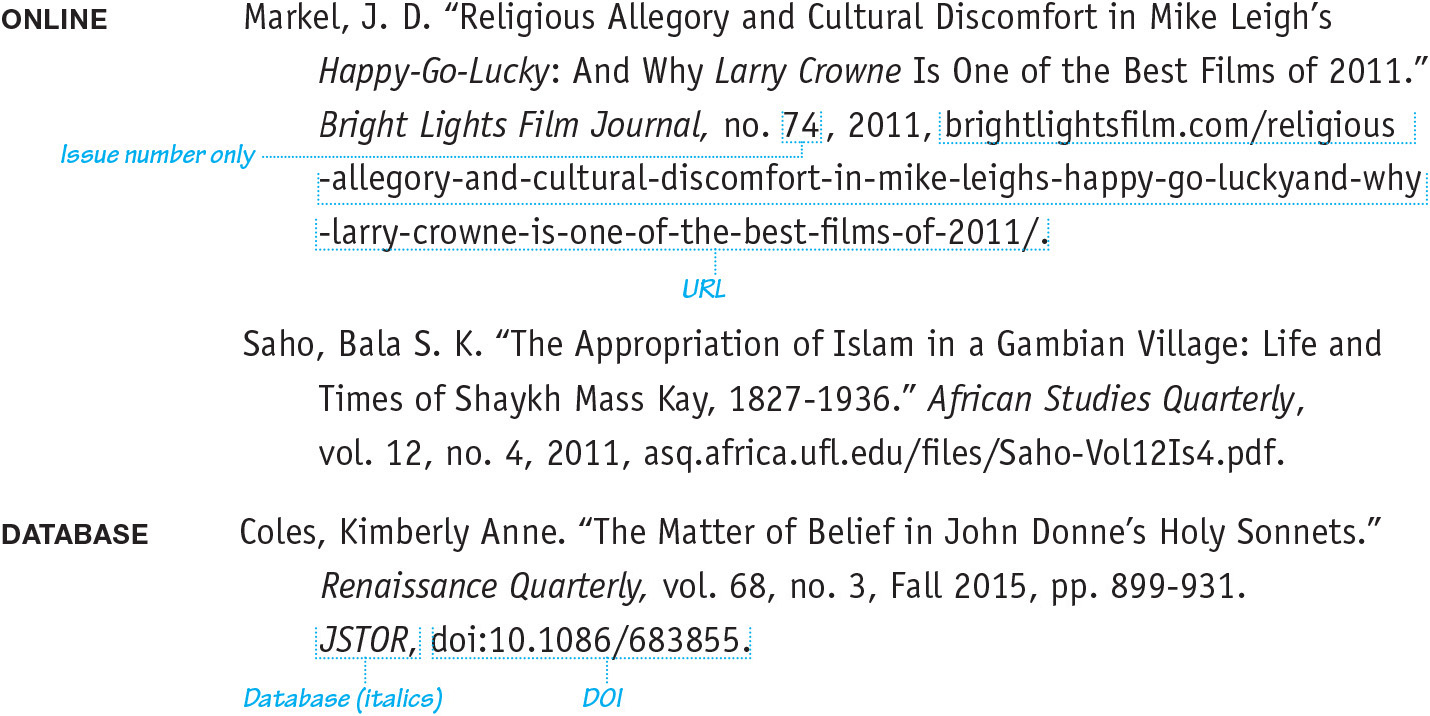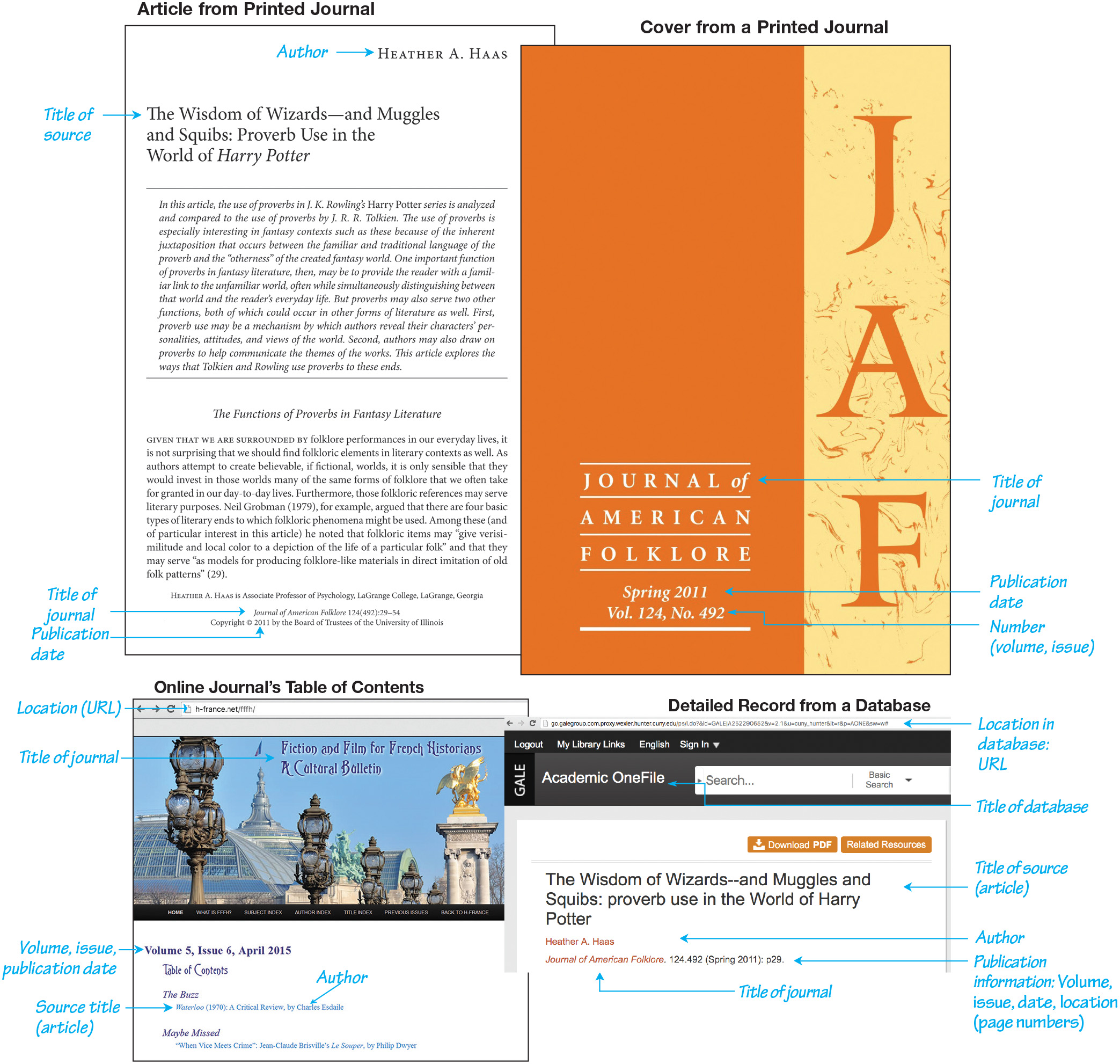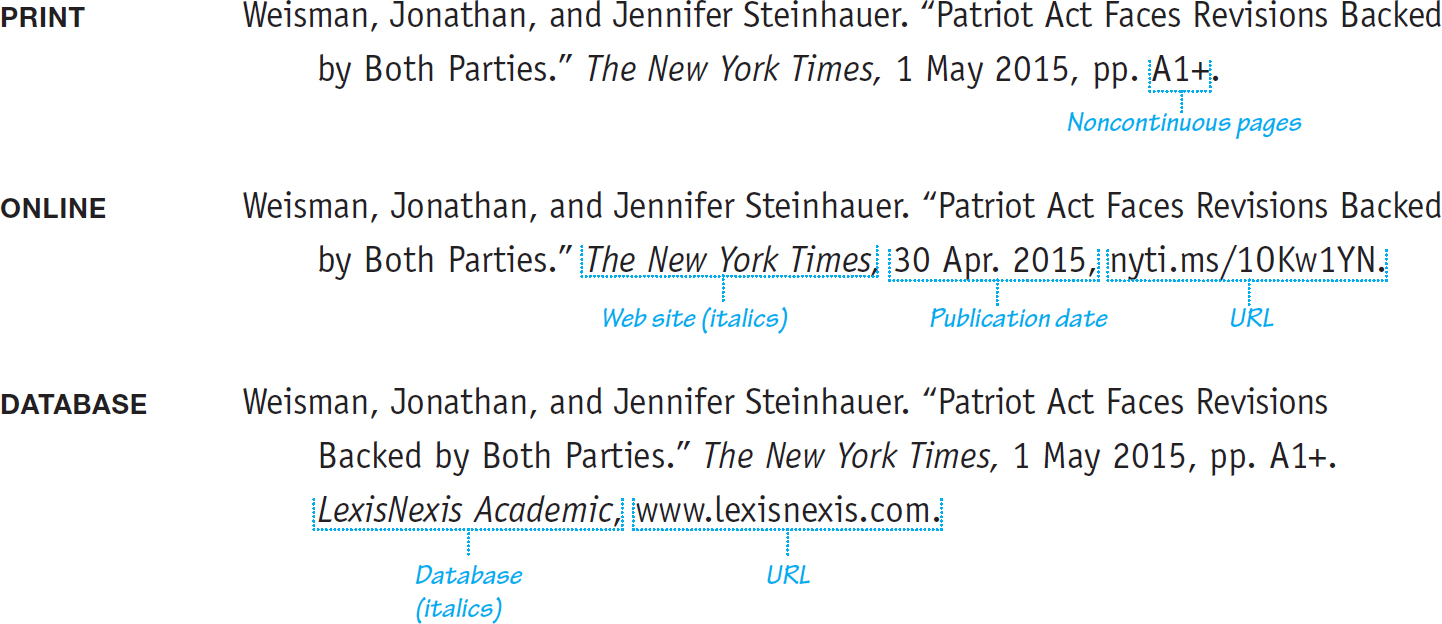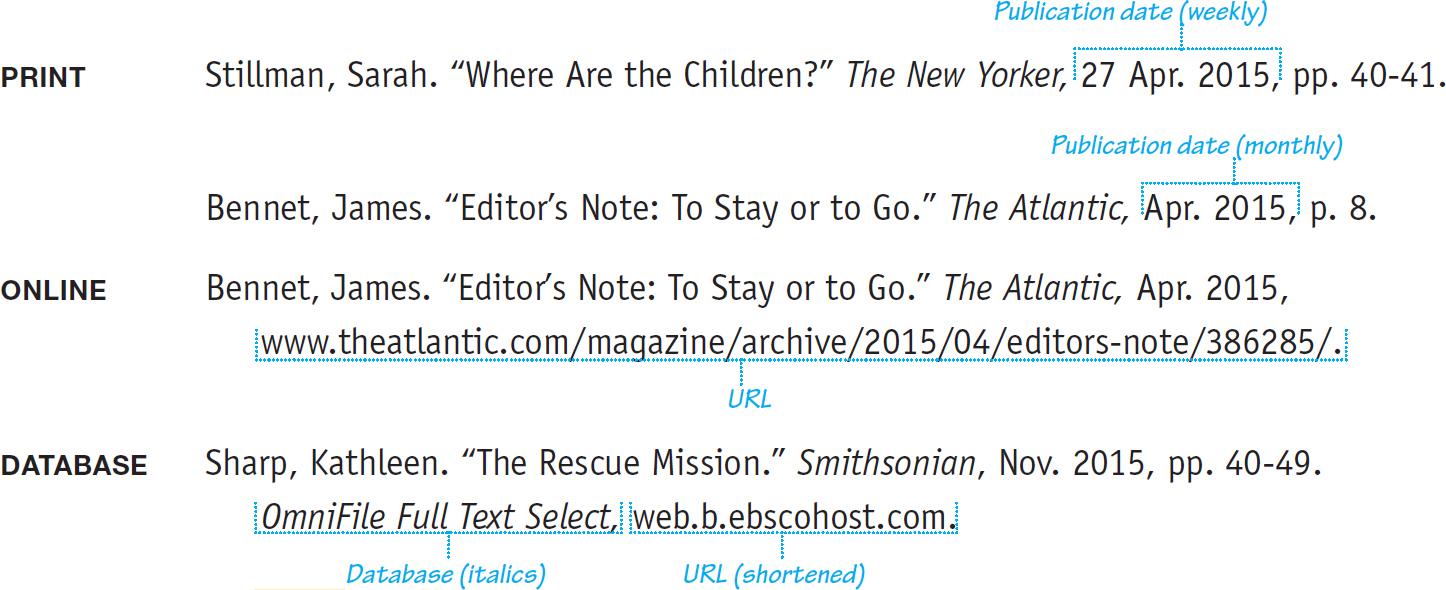Articles (Print, Online, Database)
Articles appear in periodicals—
For help distinguishing between scholarly journals and magazines, see Chapter 22.
From a scholarly journal Scholarly journals are typically identified using their volume and issue numbers, separated by a period. If a journal does not use volume numbers, provide the issue number only. Online journals may not include page numbers; if paragraph or other section numbers are provided, use them instead. If an article in a printed journal is not on a continuous sequence of pages, give the first page number followed by a plus sign. (See entry for a print version of a newspaper for an example.)
Figure 24.2 shows where to find the source information you will need to create a works-



From a newspaper Newspapers are identified by date, not volume and issue numbers, with the names of months longer than four letters abbreviated. If articles are not on a continuous series of pages, give only the first page number followed by a plus sign.

From a magazine Magazines (like newspapers) are identified by date, with the names of months longer than four letters abbreviated. For magazines published weekly or biweekly, include the day, month, and year; for magazines published monthly or bimonthly, include the month and year. If the article is unsigned, alphabetize entries by the first important word in the title (ignoring A, An, and The).

Editorial or letter to the editor

Review If the review does not include an author’s name, start the entry with the title of the review; then add Review of and the title of the work being reviewed. If the review is untitled, include the Review of description immediately after the author’s name. For a review in an online newspaper or magazine, add the URL, ideally a permalink. For a review accessed through a database, add the database title (in italics) and the DOI or URL.
![]()